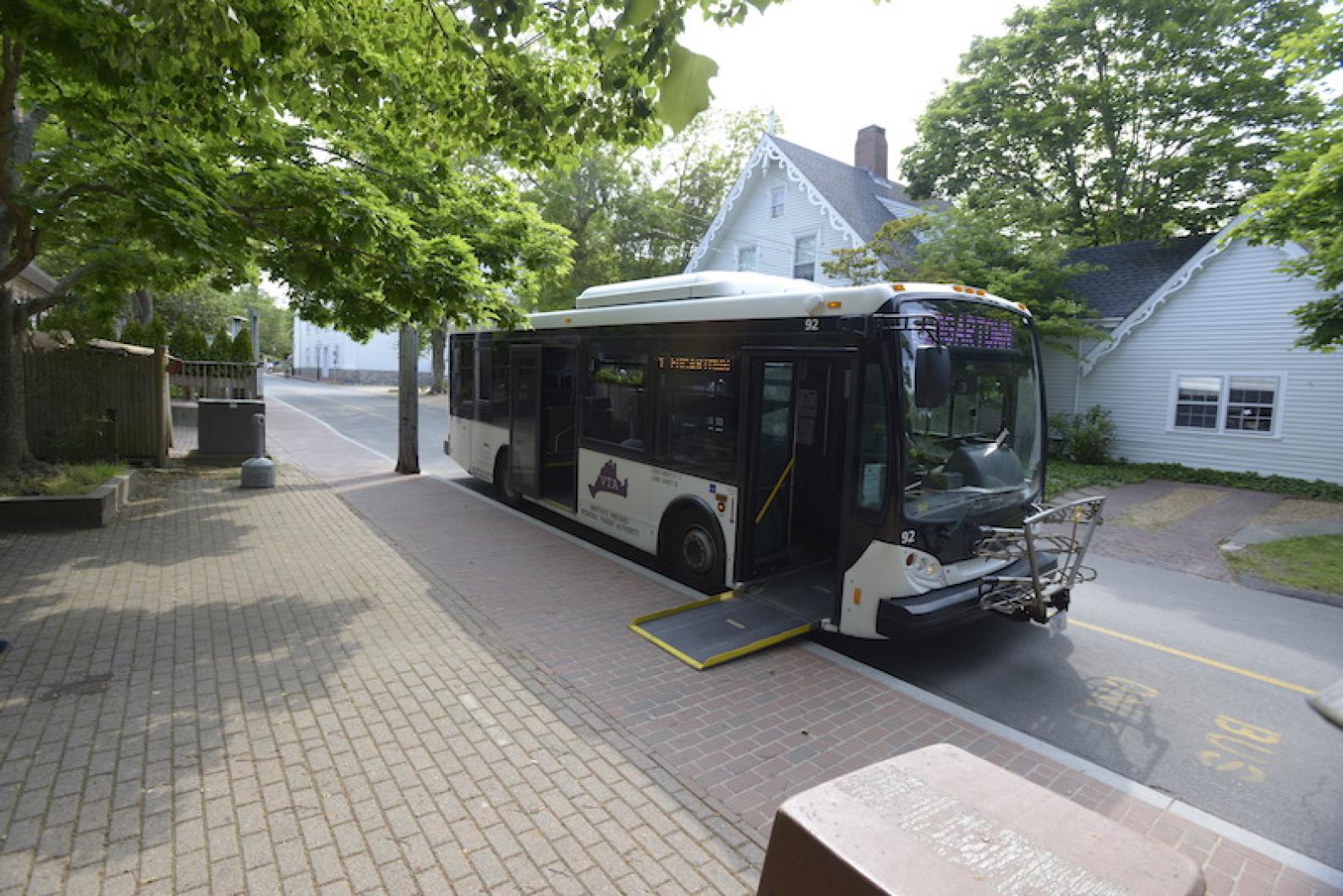A traffic study on the Vineyard Transit Authority’s plan to use the Church Street transit hub in Edgartown as a charging station for electric buses found that the new facility would not increase congestion at the site.
Limited in scope and conducted by Martha’s Vineyard Commission senior planner Bill Veno, the study examined existing transportation data and consulted with VTA personnel and transportation industry guidelines.
“Enabling induction charging at Church Street should have no impact on the volume of VTA buses using the facility,” the report said. “The charging stations do not increase the capacity of the Church Street transit hub to support an expanded bus schedule beyond what could currently be achieved with diesel buses.”
The study did not examine alternative locations for the charging station, such as the Triangle, saying that such an examination raised issues that were too complicated to address without a more in-depth transportation study.
The planned charging station has been in the works since last year, when the VTA proposed $1.4 million in upgrades to the Church street bus station that would allow the transit authority to electrify their fleet. The charging hub includes a complete redesign of the Church street terminal, including a new patio, landscaping and rider canopy. A second charging station will also exist at the VTA’s terminal in the airport business park.
Pushback against the proposal began late last winter, when Edgartown residents voiced concerns about congestion and noise from buses in the area. The Church street site is in the Edgartown historic district. Selectmen had already approved the project, but decided to hold a public hearing in February and commission the traffic study from the MVC.
Critics of the new charging station have also submitted by petition a nonbinding warrant article for the annual town meeting next week asking the town to further study the project.
The commission’s recent report left the door open for further study, but took no position on the issue.
The report found that the project would have no impact on the volume of buses that go through the site because buses already linger at the property for approximately five to eight minutes — enough time to receive an induction charge.
“Induction charging is designed to work within the existing VTA schedule and not increase the duration of stops to accommodate charging,” the report concludes. “Consequently, introduction of the induction chargers should not affect the number or frequency of VTA buses that use the Church Street transit hub.”
The report did document the heavy volume of VTA bus traffic traversing the historic district during the summer. A total of 180 buses on four different routes pass through the Church Street hub daily during peak summer months.
And while the report backed away from any analysis of the impact of moving the charging station to the Dark Woods lot near the Edgartown Triangle, it did find that routing all four buses through the Triangle would cause longer trip durations.
“VTA routes and schedules are highly interrelated — changing one route can have a cascading effect,” the report said. “Diverting buses from their existing routes on the scale suggested is complex and should involve a reexamination/recalibration of the VTA system of routes and schedules.”
The report said electric buses are half a foot wider than the normal diesel buses, which could affect traffic, although it has not yet.
“The visual friction of the wider buses may slow oncoming traffic,” the report said. “Introduction of induction chargers at Church Street will not improve the existing congestion along this segment of Main Street, nor is it likely to significantly contribute to the congestion issue.”
In the end the report concluded that any examination of the potential for using a different location for the chargers would require a far more detailed study.
“Our inquiry of an alternative location for the induction chargers is limited to the potential traffic impacts to Main Street and Upper Main Street. We did not attempt to conceptually design or site a charging facility, nor speculate on how buses might be rerouted through the Triangle area to access the chargers. Those significant issues and the impacts they pose may deserve in-depth study and modeling,” the report said.







Comments (1)
Comments
Comment policy »